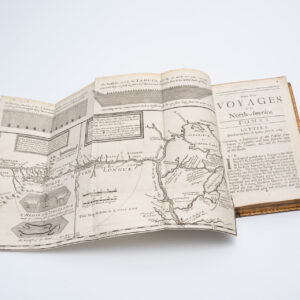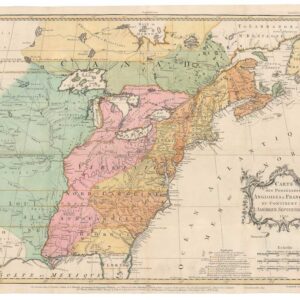Phantom islands and cartographic trickery: Bellin’s seminal map of the Great Lakes, re-issued during the French and Indian War.
Partie Occidentale de la Nouvelle France ou du Canada.
Out of stock
Description
The year is 1755 and the colonies of British America and New France are at war. This is the so-called ‘French and Indian War’ (1754-63), the North American theater of the larger Seven Years’ War, which pitted all five European great powers of the time plus many of the middle powers and spanned five continents, affecting Europe, the Americas, West Africa, India, and the Philippines.
Maps play an essential and varied role in all wars. One of the most common roles is to meet public interest in conflicts fought in distant lands. This is the case for our map, which was published by Homann Heirs in the Atlas Major. Drawn by Bellin in 1745, the map was chosen by Homann Heirs because it was based on the best cartographic intelligence of the day, a fact also recognized by the famous cartographer John Mitchell, who incorporated Bellin’s work into his landmark 1783 A Map of the British & French Dominions in North America, which would be crucial in defining the boundaries of the post-Revolutionary United States.
Above all, what makes Bellin’s map so important is its incorporation of the latest discoveries, especially those of the explorer-missionary Father Pierre de Charlevoix and of one of the last great French explorers and fur traders, Sieur de la Vérendrye. The result is a detailed presentation of river systems, French forts and settlements, as well as Indian villages.
Bellin’s meticulous accumulation of geographical knowledge made this map head and shoulders above its contemporaries. However, Bellin does make several mistakes that would influence mapmakers for generations. Most notably, he placed several imaginary islands within Lake Superior, including I. Philippeaux and I. Pontchartrain. These phantom islands would appear on maps into the early 19th century.
Heidenrich and Dahl note that this work was: “the most accurate map of that area until well after the fall of New France and therefore clearly established French claims to the disputed territory.” From another point of view, this map also advances French interests with a clever distortion of perspective. British colonial New England has been purposely diminished, giving greater prominence to New France on the map.
Overall, a gorgeous example of a seminal map.
Cartographer(s):
Johann Baptist Homann (20 March 1664 – 1 July 1724) was a German geographer and cartographer. Homann died in Nuremberg in 1724. He was succeeded by his son Johann Christoph (1703-1730). The company carried on upon his death as Homann heirs company, managed by Johann Michael Franz and Johann Georg Ebersberger. After subsequent changes in management the company folded in 1852.
Jacques Nicolas BellinJacques Nicolas Bellin (1703 – 1772) was a French hydrographer, geographer, and intellectual who worked for the Ministère de la Marine from age 18. Born in Paris, Bellin was appointed to the hydrographic office of the French Navy in 1741, rising quickly through the ranks to become its chief mapmaker. He was appointed to the Académie de Marine and the Royal Society of London.
During his long career, Bellin developed new and very accurate systems for compiling coastal charts, and he became one of the most copied cartographers of the 18th century. Over the course of fifty years, Bellin produced a large number of maps for the Ministère de la Marine. His maps of Canada and French territories in North America (New France, Acadia, Louisiana) were particularly valuable because they helped secure navigation on the St. Lawrence River and formed the cartographic basis for French claims of the Great Lakes region and Mississippi River Valley. He died at Versailles.
Condition Description
Minor blemishes.
References
OCLC 5440372.
Karpinski, Bibliography of the Early Printed Maps of Michigan, p.138.
Kershaw, Early Printed Maps of Canada III, 950, plate 715.
Phillips, A List of Maps of America, p.191.
Sellers & Van Ee, Maps & Charts of North America & West Indies, 19.
Heidenreich & Dahl, 'The French Mapping of North America', The Map Collector, issue 19 (June, 1982).
Schwartz & Ehrenberg, The Mapping of America, p.165, pl. 97.
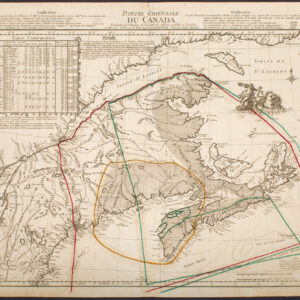
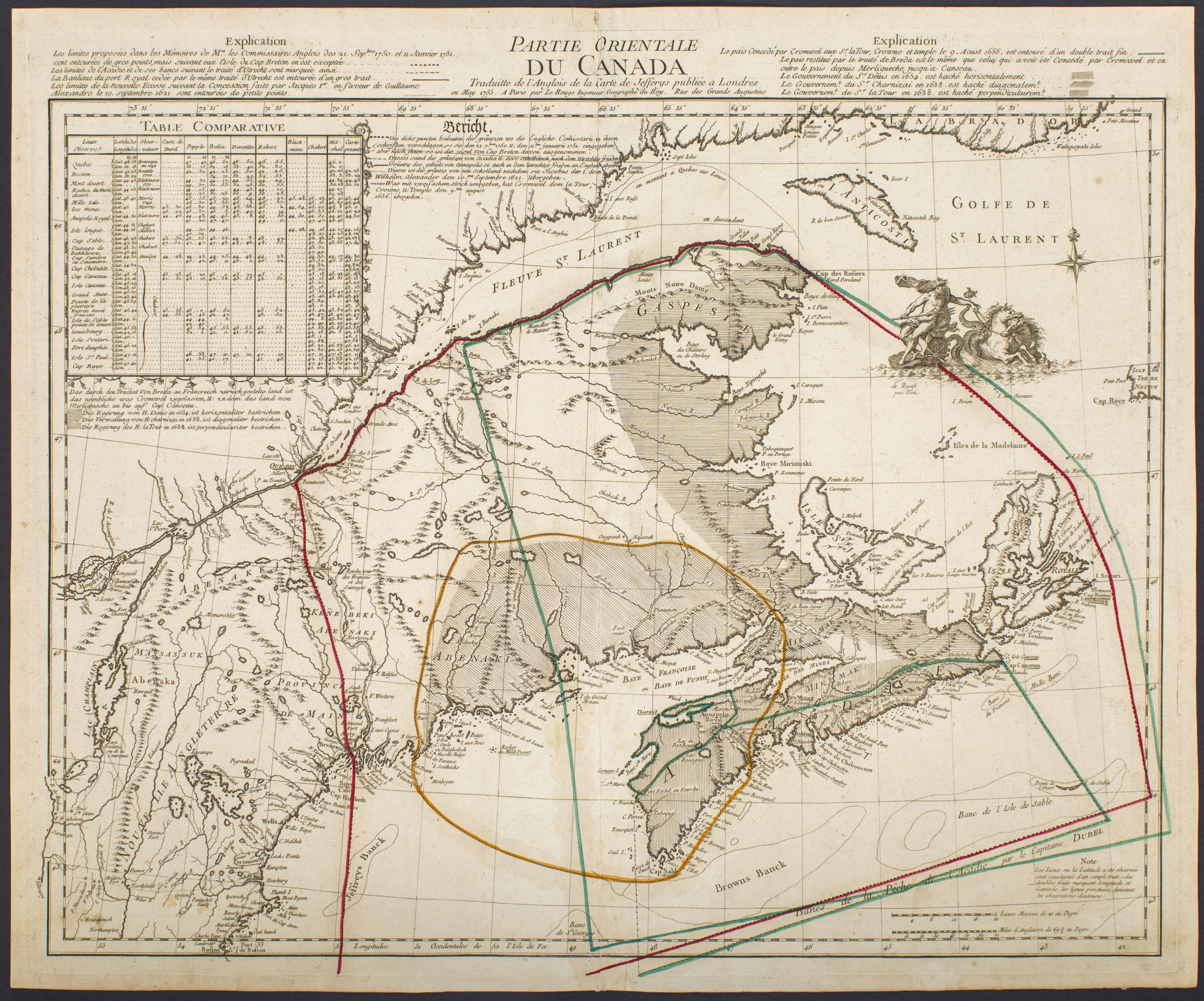
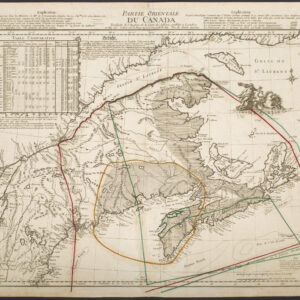
![[Vietnamese Maps of North America: Mexico, Canada, USA]](https://neatlinemaps.com/wp-content/uploads/2022/04/NL-01262-USA_thumbnail-scaled-300x300.jpg)
